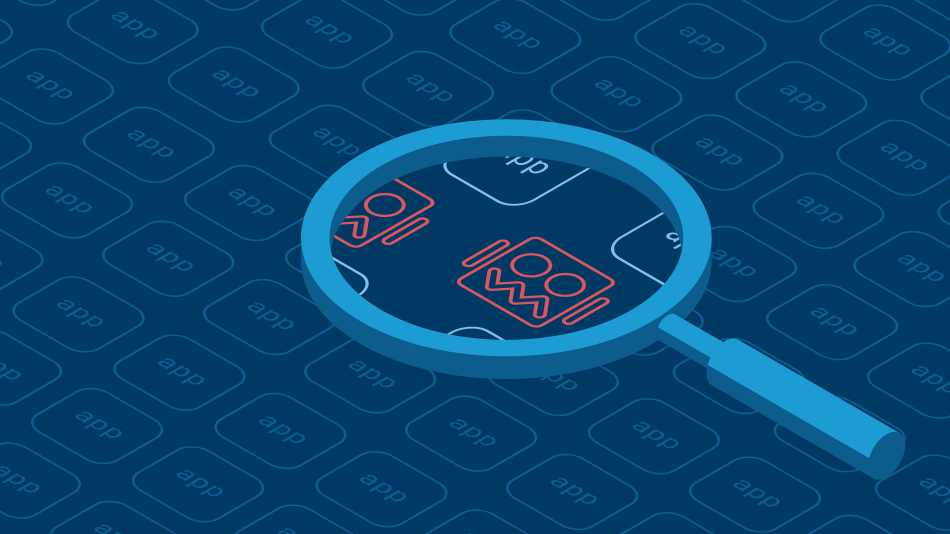What Is Bot Security? Protecting Your Infrastructure
Protect your infrastructure from malicious bot attacks and boost your cybersecurity posture with defensive bot security controls.
Bots are software applications or scripts that perform automated tasks—both helpful and malicious—on websites, applications, and systems. Understanding the growing threat of bot attacks and implementing bot security is essential for safeguarding data, customer accounts, and maintaining resiliency in today’s digital landscape.
What Is Bot Security?
Bot security is the practice of protecting against malicious bots and ensuring the integrity and availability of online resources, without impacting the good bots that help facilitate online commerce, serve as personal assistants like Alexa or Siri, or act as chatbots to automate customer service on websites.
Threats Posed by Malicious Bots
Malicious bots pose significant threats to digital ecosystems by compromising data, disrupting services, and harming businesses in multiple ways.
Bots can be programmed to infiltrate systems and exfiltrate sensitive information such as personal data, financial records, or intellectual property; bots are the primary digital tool used for credential-based attacks. Bots can also manipulate or alter data within databases or storage systems, leading to financial losses or inaccurate records.
Bots are also employed to disrupt online services and systems. Criminals can direct large numbers of bots from multiple connected devices to overwhelm websites, servers, or networks with distributed denial of service (DDoS) attacks, rendering their services inaccessible to intended users.
Bot activity can also seriously harm a business’s financial success by damaging brand reputation, manipulating inventory, and enabling account takeover (ATO) that can lead to financial fraud.
Types of Bots in Cybersecurity
In the context of cybersecurity, there are two primary types of bots: malicious and defensive.
Malicious Bots
Cybercriminals program malicious bots to launch a wide range of creative, complex, and stealthy attacks that seek to exploit attack surfaces across web properties and applications. Designed to operate without human intervention, these bots often perform tasks such as spreading malware, executing DDoS attacks, stealing sensitive information, or engaging in fraudulent activities. Malicious bots can infiltrate networks, compromise data integrity, and disrupt services, posing significant cybersecurity threats. Their actions range from exploiting software vulnerabilities to conducting social engineering attacks, with the ultimate goal of causing harm, financial loss, or unauthorized access to systems and sensitive information.
Defensive Bot Controls
Defensive bot controls are another term for automated programs and mechanisms designed to protect computer systems, networks, and web platforms from various security threats and attacks. These bots operate in a variety of ways to safeguard digital assets and ensure the integrity, confidentiality, and availability of information.
These defensive automations include antivirus bots, which use signature-based detection, behavioral analysis, and heuristics to identify patterns and behaviors associated with known malware. Defensive bots are also used as part of firewall protections, where they monitor incoming and outgoing network traffic by analyzing data packets and enforcing predefined security rules to determine whether to allow or block traffic. Web application firewalls (WAFs), in particular, incorporate behavioral analysis and can integrate with sophisticated bot management controls that provide automated protection via machine learning.
Intrusion Detection and Prevention Systems (IDPS) also employ defensive bots to proactively identify and prevent security incidents by automating responses and leveraging threat intelligence, such as blocking certain IP addresses, modifying firewall rules, or alerting security personnel. Defensive bots can also filter and divert malicious traffic related to botnets by identifying patterns associated with DDoS attacks and implementing countermeasures to maintain service availability. These actions may include dynamically updating firewall rules to block traffic from the source of the attack, preventing the malicious bots from gaining further access to the network.
Examples of Bots in Cybersecurity
Bot attacks can take many forms and target multiple types of organizations.
- Credential stuffing. One of the most common forms of bot attacks is credential stuffing, which leads to account takeover (ATO), a primary vector for various kinds of fraud. This cybercrime one-two punch begins with the theft or harvesting of user credentials, typically username-password pairs. These can be stolen via an array of other cyberattacks and other cybercrime techniques, or purchased in dark web marketplaces. Once attackers have accumulated a stash of valid credentials, they can begin the credential stuffing process, often at massive scale, by testing large numbers of compromised credentials against another site’s website login forms. Because about two-thirds of consumers reuse the same usernames and passwords across multiple websites, these breached credentials are easily exploited by cybercriminals and their armies of automated bots: a significant fraction of breached credentials will also work to gain access to accounts at other sites. Once attackers take over accounts, they can change credentials to lock out the legitimate account owner, drain the assets, and use the accounts to commit additional acts of fraud.
- Content scraping. The use of bots for content scraping has both legitimate and harmful impacts. Content scraping employs automated bots to collect large amounts of content from a target website in order to analyze or reuse that data elsewhere. While content harvesting can be used for positive purposes such as price optimization and market research, it can also be used maliciously, including price manipulation and the theft of copyrighted content. In addition, high levels of content scraping activity can also impact site performance and prevent legitimate users from accessing the site.
- DDoS attacks. Degrading site performance is the intended goal of DDoS attacks, when criminals orchestrate large numbers of bots from multiple sources or a botnet, which is a network of compromised computers or devices under the control of the attacker. The attacker coordinates these multiple sources to simultaneously launch the attack against the target, causing it to become overwhelmed and unavailable. DDoS attacks can have severe consequences, compromising the availability and integrity of online services and causing significant disruption, with the potential for financial losses, extortion, and reputational damage.
- Inventory hoarding. Sometimes referred to as purchasing bots, reseller bots are deployed to purchase online goods or services in bulk the moment they go on sale. By completing the checkout process instantaneously, criminals gain mass control of valuable inventory, which is usually resold on secondary markets at a significant mark-up. These bots allow criminals to control inventory or prices, leading to artificial scarcity, denial of inventory, and consumer frustration.
- Fake account creation. Cybercriminals use bots to automate the account creation process and use false accounts to commit fraudulent acts, such as influencing product reviews, distributing false information, spreading malware, abusing incentive or discount programs, or creating and sending spam. Similarly, criminals can program bots to apply for credit cards or loans to defraud financial institutions.
- Gift card cracking. Attackers deploy bots to check millions of gift card number variations to identify card numbers that hold value. Once attackers identify card numbers with positive balances, they redeem or sell the gift card before the legitimate customer has had a chance to use it. Travel and hospitality loyalty programs are also targets of these bot-based attacks.
What Bot Attacks Do
Bot attacks can have profound negative impacts on an organization’s networks and inflict significant damage to their business operations.
Data theft is one of the most serious potential consequences of a bot attack, as bots can be programmed to systemically harvest data from websites, databases, or APIs. This data may include intellectual property, trade secrets, or other proprietary information that can result in loss of competitive advantage or damage to brand reputation. Theft of customer information can also jeopardize compliance with data protection regulations and lead to fines or legal consequences.
Bot attacks can cause significant damage to organizations by disrupting services, leading to financial losses and damage to customer trust. One serious consequence of unmitigated bot-driven attacks is DDoS, when criminals direct botnets to overwhelm network resources and cause service disruptions.
Services disruptions can also result from credential stuffing and account takeover attacks, when legitimate customers find themselves locked out of their accounts and unable to transact business. Not only are customers unable to access their accounts, the criminals that do control the compromised accounts can use them to commit fraudulent transactions.
How to Set Up a Security Bot
Setting up security bot defenses to protect against malicious bot attacks involves several key steps.
1. Identify Bot Traffic
Conduct a thorough analysis to identify potential bot threats specific to your system and your industry. Use techniques such as IP analysis to examine the characteristics of incoming traffic based on the source IP address. This helps identify patterns associated with known malicious IP addresses or suspicious behavior and helps differentiate between bot traffic and legitimate user activity. Maintain deny lists of known malicious IP addresses associated with bot activity.
Analyze the geolocation of IP addresses to detect anomalies; a sudden influx of traffic from an unusual region may indicate a botnet. Additionally, many Autonomous System Numbers (ASNs) are known to be used by attackers to build a distributed infrastructure for their campaigns to help avoid detection. Through user-agent analysis, examine user-agent signatures to identify the type of client making the request. Bots often use generic or modified user-agents that deviate from typical patterns, making them distinguishable from genuine users.
2. Conduct Behavioral Analysis
Use behavior analysis to evaluate incoming traffic to identify patterns or anomalies that may indicate bot activity. This method is particularly effective against sophisticated bots that attempt to mimic human behavior. Examine the duration and flow of user sessions, as bots often have shorter and less varied sessions compared to legitimate users, or may exhibit repetitive, rapid, or non-human-like patterns in their interactions with a website or application. Some advanced behavior analysis mechanisms track mouse movements and clicks to differentiate between human and automated interactions.
3. Set Up a Web Application Firewall (WAF)
A WAF acts as a protective barrier between a web application and the Internet, protecting data and web applications from a variety of cyber threats and preventing any unauthorized data from leaving the app. WAFs include features for detecting and mitigating malicious bot traffic, preventing malicious activities such as web scraping, credential stuffing, and automated attacks. WAFs also include rate limiting and throttling mechanisms that restrict the number of requests from a specific IP address within a defined time frame, helping mitigate the impact of DDoS attacks. WAFs can also protect web applications and systems from other malicious and automated attacks, including SQL injection, cross-site scripting (XSS), and cross-site request forgery (CSRF).
A WAF can be deployed in several ways—it all depends on where your applications are deployed, the services needed, how you want to manage it, and the level of architectural flexibility and performance you require. A WAF can also integrate with specialized bot management controls that maintain efficacy and resilience regardless of how attackers pivot their malicious campaigns. Here’s a guide to help you choose which WAF and deployment mode is right for you.
4. Deploy Specialized Bot Management
Security must adapt to attacker retooling that attempts to bypass countermeasures—regardless of the attackers’ tools, techniques, or intent—without frustrating users with login prompts, CAPTCHA, and MFA. This includes omnichannel protection for web applications, mobile applications and API interfaces, real-time threat intelligence, and retrospective analysis driven by AI.
Visibility across clouds and architectures and durable and obfuscated telemetry, coupled with a collective defense network and highly trained machine learning models, provide unparalleled accuracy to detect and deter bots, automated attacks, and fraud. This allows mitigations to maintain full efficacy as attackers retool and adapt to countermeasures—stopping even the most advanced cybercriminals and state actors without frustrating your real customers.
Bot Security Best Practices
Following are best practice guidelines for maintaining effective bot security.
- Proactively monitor bot traffic and respond quickly to threats. Regular monitoring allows organizations to establish a baseline of normal behavior for web traffic. Any deviations or anomalies in patterns can then be detected early, signaling potential bot activity. Early detection enables a prompt response before bots can cause significant harm. In addition, the threat landscape is constantly evolving, with new bot attack techniques emerging regularly. Regular monitoring allows security teams to stay informed about the latest trends and identify new threats as they arise. A combination of real-time intelligence and retrospective analysis using human-powered AI allows defenders to tune countermeasures and neutralize attackers by thwarting retooling efforts.
- Set up real-time alerts for suspicious bot activity. Use logging and alerting systems to receive immediate notifications of suspicious behavior. Regularly review logs to identify patterns and potential security incidents. Develop a comprehensive incident response plan outlining the steps to be taken in the event of a bot-related attack. Many vendors provide continuous monitoring and regular threat briefings to help organizations analyze risk and employ necessary protections.
- Develop systematic practices for security patching. By promptly applying security patches and system updates, organizations mitigate the risk of exploitation by malicious bots that target known vulnerabilities. Patching systems regularly also reduces the attack surface and makes it more challenging for bots to exploit undisclosed vulnerabilities, increasing protection against zero-day exploits. It is important to note that many bots target inherent vulnerabilities and abuse critical business logic—such as logon, create account, reset password functions—versus exploiting a software vulnerability or software weakness.
How F5 Can Help
As malicious bot attacks grow increasingly more sophisticated, malicious, and dangerous, bot security also continues to advance to keep ahead and maintain resilience in an ever-expanding arms race between cybercriminals and security teams—with the understanding that threats (and mitigations) will never stop evolving.
The best way to mitigate bot threats is to adopt a layered security approach to manage changing attack vectors and identify and address vulnerabilities and threats before they can be executed. Proactively preparing your organization to deal with the impact of bots will help protect your intellectual property, customer data, and critical services from automated attacks.
F5 Distributed Cloud Bot Defense provides real-time monitoring and intelligence to protect organizations from automated attacks, including omnichannel protection for web applications, mobile applications, and API interfaces. Distributed Cloud Bot Defense uses real-time threat intelligence, retrospective analysis driven by AI, and continuous security operations center (SOC) monitoring to deliver bot mitigation with resilience that thwarts the most advanced cyberattacks. The F5 solution maintains effectiveness regardless of how attackers retool, whether the attacks pivot from web apps to APIs or attempt to bypass anti-automation defenses by spoofing telemetry or using human CAPTCHA solvers.
F5 also offers multi-tiered DDoS protection for advanced online security as a managed, cloud-delivered mitigation service that detects and mitigates large-scale network, protocol, and application-targeted attacks in real time; the same protections are available as on-premises hardware, software, and hybrid solutions as well. F5 Distributed Cloud DDoS Mitigation defends against volumetric and application-specific layer 3-4 and advanced layer 7 attacks before they reach your network infrastructure and applications.
SOLUTION OVERVIEW
Bot Detection and Security: Stop Automated Attacks ›


